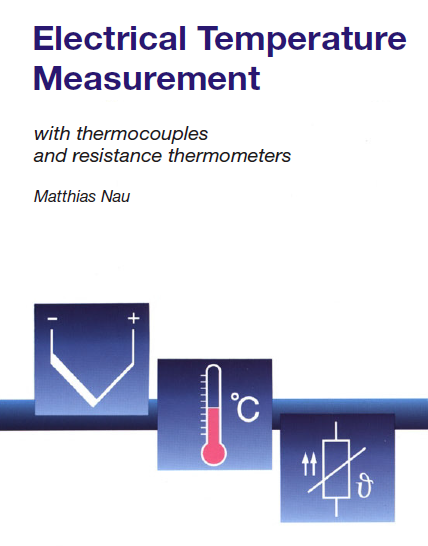Electrical Temperature Measurement
Temperature has been one of the most important process variables in the automation, consumer goods, and manufacturing industries for decades. Electrical temperature measurement, using resistance thermometers and thermocouples, has been around for more than a century, but sensor and thermometer development is far from complete. Continuous process optimization places ever-increasing demands on thermometers to measure temperature faster, more accurately, and with better repeatability over a longer period of time.

|
| Electrical Temperature Measurement PDF |
For many years, this book has been a favourite resource for interested users. This version has been revised and updated to reflect new standards and developments. The new chapter "Measurement uncertainty" in particular introduces the fundamental concepts of the internationally recognised ISO guideline "Guide to the expression of uncertainty in measurement" (abbreviated to GUM) and illustrates methods for determining the measurement uncertainty of a temperature measurement system and the factors that influence it. The chapter on explosion-proof thermometers has also been updated to reflect European Directive 94/9/EC, which takes effect on July 1, 2003.
Contents in Electrical Temperature Measurement
1 Electrical temperature measurement
2 The concept of temperature
3 Thermocouples
4 Resistance thermometers
5 The transfer function
6 Heat conduction error
7 Calibration and certification
8 Fittings and protection tubes
9 Explosion-proof equipment
10 The measurement uncertainty
advertisement
Electrical Temperature Measurement
ReplyDeleteHow to download the pdf
DeleteSend download link
ReplyDeleteHow to download or get download link
ReplyDelete